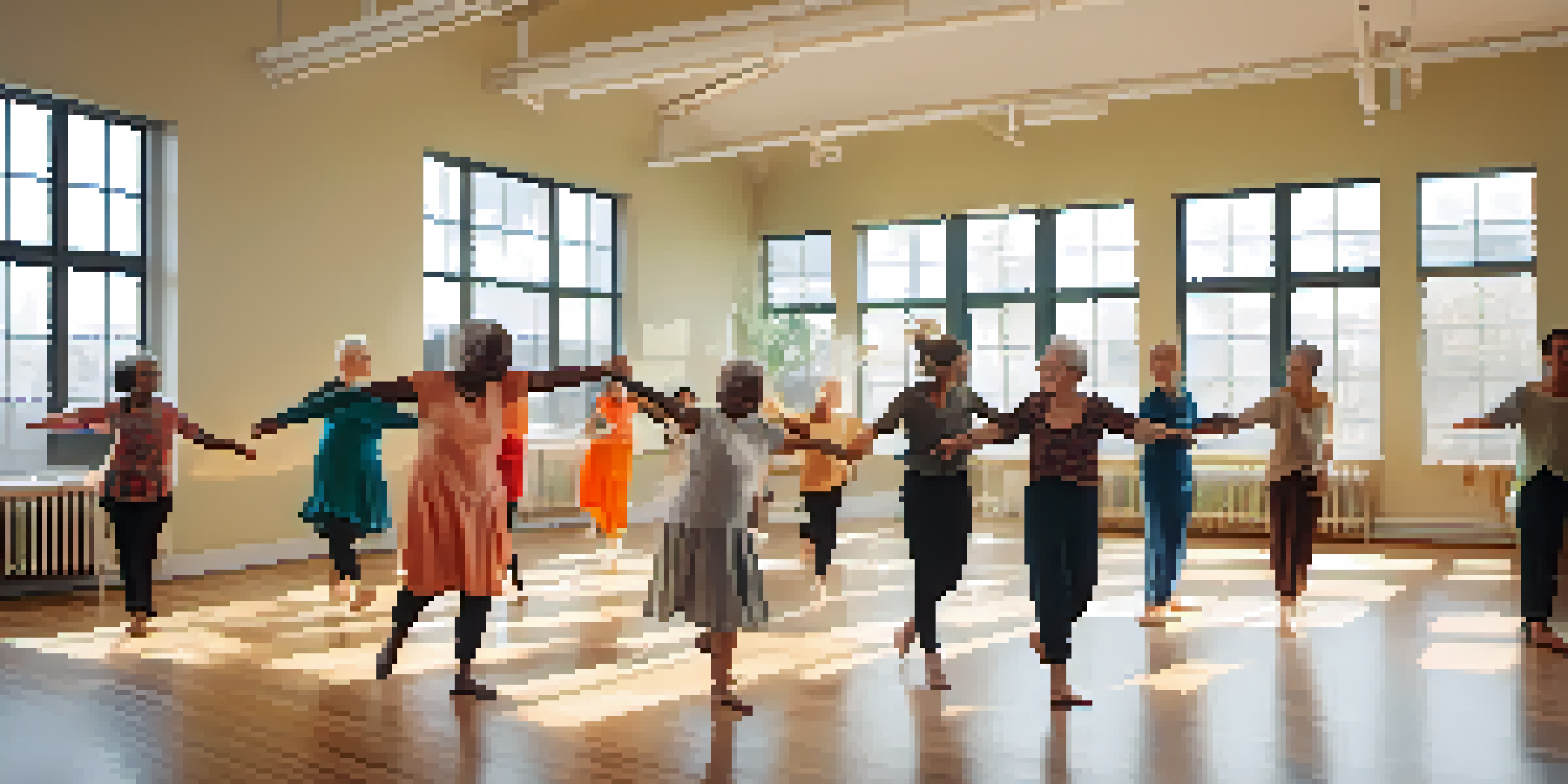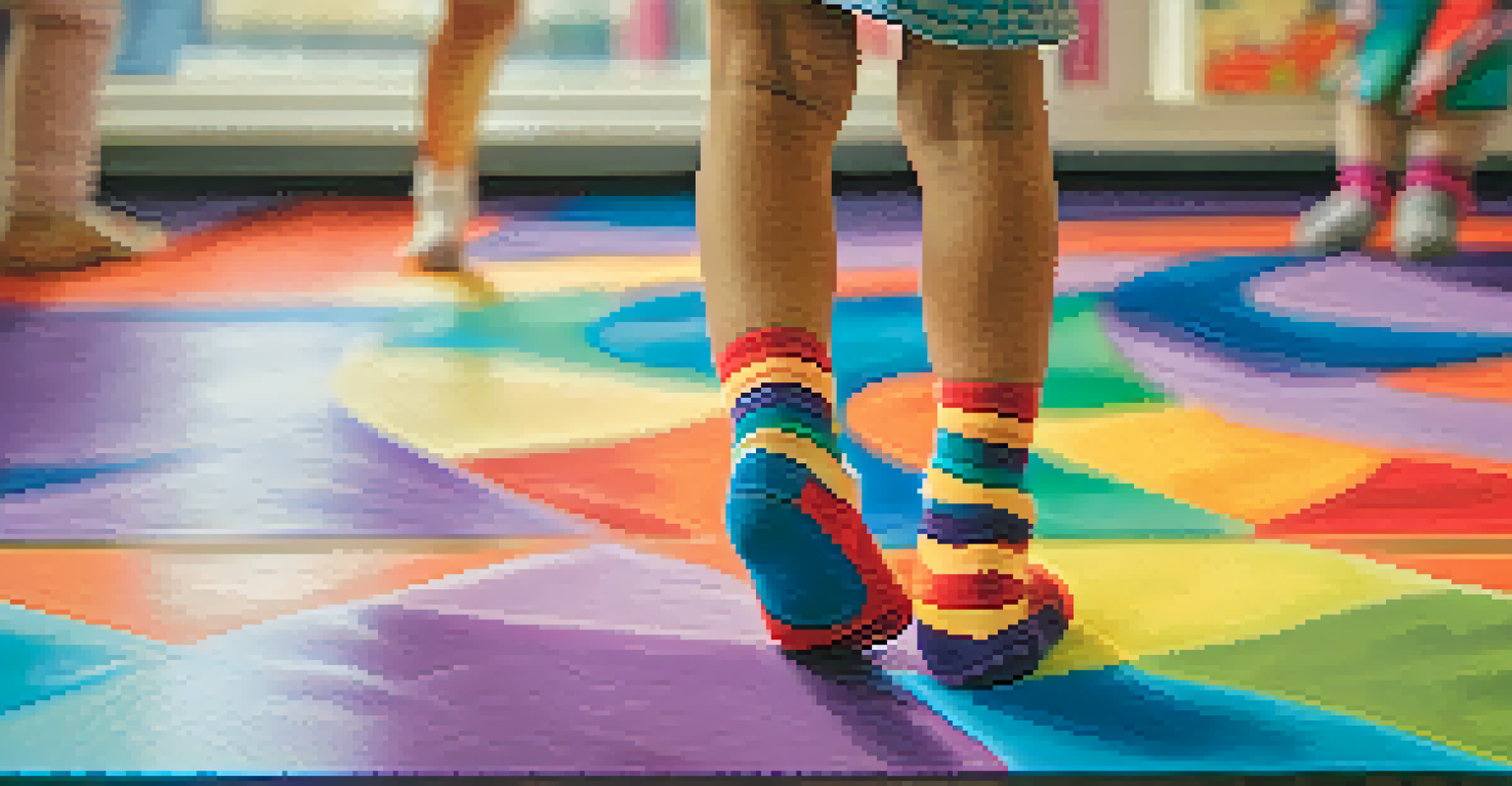Dance Therapy: Enhancing Memory Through Movement and Rhythm

What is Dance Therapy and Its Purpose?
Dance therapy, also known as dance movement therapy, is a unique form of therapy that uses dance and movement to promote emotional, cognitive, and physical well-being. It combines the art of dance with therapeutic techniques, allowing individuals to express themselves creatively while addressing psychological issues. The purpose is not just to move but to connect body and mind, fostering healing and self-awareness.
Dance is the hidden language of the soul.
Through dance therapy, participants often find a safe space to express their emotions, which can lead to improved mental health. This therapeutic approach is particularly beneficial for those dealing with trauma, anxiety, or depression. By engaging in rhythmic movement, individuals can unlock feelings that may be difficult to articulate verbally.
Moreover, dance therapy can enhance memory by utilizing various movement patterns and rhythm exercises. These activities stimulate brain functions, making it easier for participants to process and retain information. When movement and memory intertwine, the results can be transformative.
The Science Behind Movement and Memory
Research shows that physical movement can significantly affect cognitive function and memory. Engaging in rhythmic movements can increase blood flow to the brain, which helps improve various cognitive processes, including memory retention. This phenomenon is often attributed to the way our brains are wired to associate movement with memories.

For instance, think about how you might remember a song better when you dance to it. The rhythm helps anchor the memories, making them more memorable. Similarly, dance therapy incorporates music and rhythm to create a multisensory experience that enhances memory recall.
Dance Therapy Promotes Well-Being
Dance therapy uses movement to enhance emotional, cognitive, and physical health, helping individuals express themselves and heal.
Additionally, studies have indicated that engaging in dance can stimulate areas of the brain linked to memory and learning. This stimulation can lead to improved recall and cognitive flexibility, allowing individuals to access memories more easily. Thus, dance therapy not only fosters emotional healing but also sharpens cognitive skills.
How Dance Therapy Benefits Different Age Groups
Dance therapy is a versatile approach that can benefit individuals of all ages, from children to seniors. For children, it offers a creative outlet to express emotions and develop social skills. Engaging in dance can also aid in memory development, helping them remember sequences and stories through movement.
Movement is a medicine for creating change in a person's physical, emotional, and mental states.
For adults, particularly those dealing with stress or life transitions, dance therapy provides a healthy way to cope. It encourages self-expression and can serve as a powerful tool for processing emotions and enhancing memory. The structured movements often require focus and coordination, which can further sharpen cognitive abilities.
In older adults, especially those experiencing memory-related conditions like dementia, dance therapy can be particularly effective. It not only stimulates cognitive function but also encourages social interaction, reducing feelings of isolation. The rhythmic movements can evoke memories from the past, creating moments of joy and connection.
Integrating Dance Therapy in Daily Life
Integrating dance therapy into daily routines doesn't require professional training; simple movements can be beneficial. Incorporating a few minutes of movement each day can enhance both physical and mental health. For instance, dancing to your favorite song in your living room can lift your spirits while stimulating your brain.
You might also consider joining a local dance class or group, which can provide both social interaction and structured movement. These classes often include various styles, allowing participants to find what resonates with them, thus encouraging regular participation. The social aspect can further amplify the positive effects on memory and mental health.
Movement Enhances Memory Recall
Engaging in rhythmic movements during dance therapy stimulates brain functions, making it easier to process and retain information.
Moreover, incorporating mindful movement practices, like yoga or tai chi, can complement dance therapy. These activities encourage body awareness and can enhance the effects of dance on memory. By fostering a regular practice of movement, individuals can create lasting improvements in their cognitive health.
The Role of Rhythm in Enhancing Memory
Rhythm plays a crucial role in dance therapy, as it can significantly enhance the memory recall process. Our brains naturally respond to rhythmic patterns, making it easier to memorize sequences and information. This is why many learning techniques incorporate rhythmic elements to help retain information.
In dance therapy, rhythmic movement can help participants create associations between physical movements and specific memories or emotions. For instance, a particular dance step might remind someone of a cherished memory, making it easier to recall that moment when they perform the movement again. This connection between rhythm and memory is powerful.
Additionally, engaging with rhythm can trigger emotional responses, stimulating brain areas associated with memory. By tapping into both physical movement and emotional resonance, dance therapy can create a rich tapestry of experiences that enhance memory retention and recall.
Success Stories in Dance Therapy
Numerous success stories highlight the transformative power of dance therapy in enhancing memory. For example, many individuals with dementia have reported improvements in mood and cognitive function after participating in regular dance sessions. These experiences often lead to moments of clarity and joy, proving that movement can bridge gaps in memory.
In schools, children who engage in dance therapy often show improved focus and retention in academic settings. Teachers have noted that students who participate in dance exercises tend to recall lessons better, attributing this to the physical engagement that accompanies their learning process. It's a wonderful example of how movement can aid memory in educational contexts.
Benefits for All Age Groups
Dance therapy is adaptable for all ages, providing emotional expression, stress relief, and improved cognitive function for children, adults, and seniors.
Furthermore, in clinical settings, therapists have shared stories of patients who, through dance, have accessed memories thought lost. These moments of connection between movement and memory not only enrich the therapeutic experience but also highlight the profound impact dance can have on our cognitive health.
Getting Started with Dance Therapy
If you're interested in exploring dance therapy, starting is easier than you might think. Look for local classes or workshops led by certified dance therapists who can guide you through the process. Many community centers and health facilities offer programs tailored to different age groups and abilities.
You can also try creating your own dance therapy experience at home. Choose music that resonates with you and allow yourself to move freely. Focus on how the music makes you feel and let your body express those emotions through movement. This personal practice can be incredibly therapeutic and help enhance your memory over time.

Lastly, consider joining online communities or forums where you can connect with others interested in dance therapy. Sharing experiences and tips with like-minded individuals can provide motivation and support on your journey to harnessing the benefits of movement and rhythm.